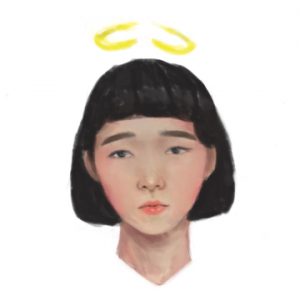British based singer Rina Sawayama’s new EP emits nostalgic late 90’s early 2000’s POP/R&B vibes and futuristic aesthetics in these newly released tracks. She presents experimental and melodic twists in her vocal performance. She heavily utilizes layering both visually, vocally and metaphorically. She bright, bold and unapologetically inspired by her culture. In many ways her presence feels revolutionary to see an Asian women singing and gaining success in R&B as a genre. R&B is self assertive and often visits heavier themes, all notions some what distant from most peoples ideologies surrounding Asian women.
Themes focused in the EP : loneliness, identity, addiction,love, romance, the internet.
 Courtesy of XING © Tammy Volpe
Courtesy of XING © Tammy Volpe
